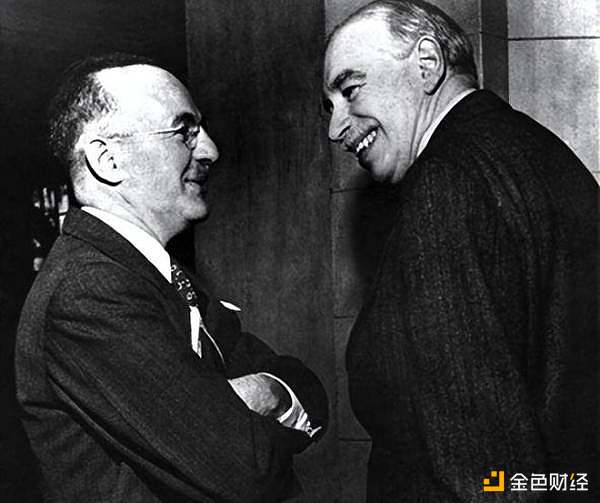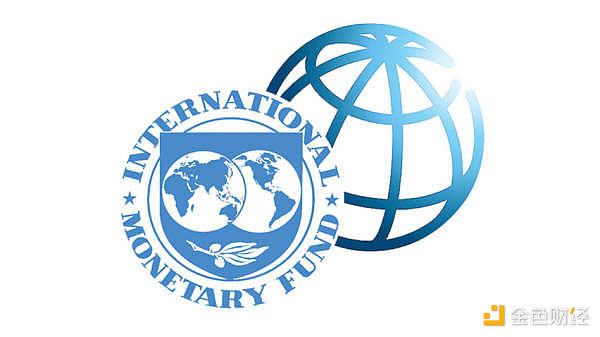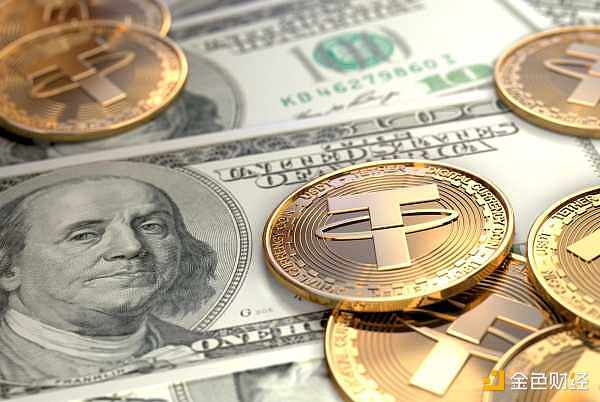Source: Observer Network
Author: Zhu Guangyao
Editor’s Note
Trump's enthusiasm for digital currencies was unusual before and after his second term in the White House; not only did he receive substantial campaign funding from the digital currency sector during his campaign, but he also issued his own virtual currency before taking office as President of the United States.
Now, the Trump administration has taken another step forward. On June 17, the U.S. Senate voted to pass the "Guidance and Establishment of the U.S. Stablecoin National Innovation Act" (referred to as the "GENIUS Act"), marking a key step in the U.S. framework for regulating and developing stablecoins. This legislation will have a profound impact on the domestic stablecoin market in the U.S. and will reshape the global monetary system.
Regarding the impact of digital currencies, especially stablecoins, on the global monetary system, former Deputy Treasury Secretary Zhu Guangyao spoke at the 2025 China International Issues Forum titled "World Order and China's Foreign Strategy in a Turbulent Period" held on June 26. Observer Network has been authorized to publish this for readers' reference.
Main Text
Distinguished guests, in line with today's meeting theme, I would like to speak about the evolution of the Bretton Woods system.
The year 2025 marks the 80th anniversary of the victory of the Chinese people's War of Resistance Against Japanese Aggression and the World Anti-Fascist War. After World War II, the establishment of the United Nations laid the political foundation for the post-war period, which is of great historical significance; at the same time, one year before the end of World War II, in July 1944, the historic Bretton Woods Conference was held in Bretton Woods, New Hampshire, USA, laying the foundation for post-war recovery and economic development.
 Keynes and White during the Bretton Woods Conference
Keynes and White during the Bretton Woods Conference
This conference established the International Monetary Fund, the World Bank, and the predecessor of the WTO, the General Agreement on Tariffs and Trade, creating the economic order after World War II. These institutions are all specialized agencies of the United Nations. China, as an important member of the Allies, participated in and contributed to the establishment of the Bretton Woods system.
Studying the establishment and changes of the Bretton Woods system, including the role of stablecoins, must be placed within the broader framework of the global political and economic landscape. We need to look at the current total scale of the global economy, the development status of major global economies, and related trade conditions, as well as cross-border capital and the overall international capital settlement situation. Here, I refer to authoritative data: the international economic situation is based on IMF data, trade conditions on WTO data, and capital flows on BIS data.
In 2024, the total scale of the world economy is projected to be $110 trillion, with China and the U.S. being the two largest economies globally. The U.S. economy is $29.17 trillion, while China’s is $18.27 trillion. According to the statistics released by our National Bureau of Statistics, China's GDP in 2024 is projected to be 134.9 trillion yuan, which, when converted at the exchange rate, amounts to $18.27 trillion, making China the second-largest economy in the world.
Outside of China and the U.S., there is currently no third economy exceeding $5 trillion in scale. Germany ranks third at $4.17 trillion, followed by Japan at $4.07 trillion. India ranks fifth at $3.9 trillion. India is ambitious; Prime Minister Modi has stated that he aims to quickly bring India to a $5 trillion economy while also making India the second-largest economy globally, but he has not specified who will be the largest economy at that time.
From a trade perspective, the total global trade scale in 2024 is projected to be $65 trillion, with goods trade at $49 trillion and services trade at $16 trillion. Trade data between China and the U.S. is roughly equal, with China's services trade in 2024 surpassing the $1 trillion mark for the first time, while goods trade remains the largest in the world for several consecutive years at $6.2 trillion. The combined total of goods and services trade is $7.2 trillion.
The U.S. goods trade is less than ours, ranking second at $5.4 trillion, but its services trade amount is higher than China's at $1.9 trillion, bringing the total to $7.3 trillion. Our total is $7.2 trillion, indicating that the trade volumes of the two countries are roughly equal. The overall trade volumes of both the U.S. and China account for about 11% of global trade, which is why the WTO states that U.S. tariff policies only affect 10% of global trade, based on the aforementioned data.
Looking at the overall settlement situation of global funds, BIS data shows that the total global capital flow in 2024 is projected to be $250 trillion, with the flow of funds far exceeding GDP and trade volumes. At the same time, we should note that in this year, the settlement amount of stablecoins reached $27.6 trillion, surpassing the total transaction volume of Mastercard and Visa in the U.S., according to statistics from Deutsche Bank.
By analyzing the data on global economy, trade, and capital flows, we can have a clear understanding: in terms of total economic scale, the U.S. still accounts for over 25% of the world economy, but this is a significant decline from 56% at the end of World War II in 1945.
It was precisely because of the U.S.'s absolute advantage at that time that the post-war global financial system was dollar-dominated, and the Bretton Woods system was established based on the dollar, with a crucial foundation being 1 ounce of gold equaling $35.
However, by 1971, the relative decline of U.S. economic strength made it impossible for the U.S. to maintain the commitment of 1 ounce of gold equaling $35, leading to the decoupling of the dollar from gold, a well-known event referred to as Nixon's default, marking the end of the first phase of the Bretton Woods system.

IMF and WBG
However, the decoupling of the dollar from gold does not equate to the bankruptcy of the Bretton Woods system, as the International Monetary Fund and the World Bank still exist. At the same time, in the early to mid-1970s, the oil crisis drastically increased oil prices, impacting the global economy and raising the question of which currency would be used to settle oil transactions, leading to the emergence of petrodollars. Anchoring petrodollars and providing liquidity to the international capital market marked the entry of the Bretton Woods system into its second phase.
However, today, the second phase of the Bretton Woods system can no longer be maintained, with the core issue being the unsustainable U.S. national debt, which surpassed its $36 trillion debt ceiling in January of this year. By March, this figure reached $36.2 trillion, and now the U.S. national debt accounts for over 124% of GDP. Ray Dalio of Bridgewater Associates has clearly stated that if any country's national debt exceeds 135% of GDP, it means that 40% of its fiscal revenue must be used to pay interest on government bonds, putting that country's finances at risk of collapse.
American historians have also publicly acknowledged that throughout world history, if a country's interest payments on national debt exceed its military spending, that empire cannot be sustained. In 2024, U.S. interest payments on national debt exceeded $1 trillion, while military spending is $895 billion, coupled with a trade deficit exceeding $1 trillion, creating immense pressure on U.S. national finances.
Of course, as the world's largest economy and military power, the U.S. is also trying various means to shift the crisis. From an economic perspective, we need to carefully analyze the four significant economic and financial measures taken by the U.S. in June.
The first measure is that on June 3, the U.S. Treasury repurchased $10 billion in U.S. bonds. While there have been precedents for the U.S. Treasury to repurchase U.S. debt, the amount of $10 billion is unprecedented, and then on June 10, another $10 billion was repurchased, indicating that the U.S. Treasury believes the pressure on national debt is extremely high and cannot be ignored.
The Federal Reserve has insisted on addressing the significant uncertainties brought about by tariff policies in its monetary policy, aiming to reduce the impact on inflation, thus maintaining the benchmark interest rate at 4.25% to 4.5%. Trump was very angry, stating that the Federal Reserve should adjust interest rates, as the U.S. now has to pay an additional $900 billion annually. He believes at least a 3% rate cut would save that $900 billion in expenditure. However, the Federal Reserve has insisted on not adjusting monetary policy due to the significant uncertainties arising from tariff policies, forcing the U.S. Treasury to take action under these circumstances.
The second measure is that while the Federal Reserve did not adjust monetary policy, it made significant adjustments to regulatory policies in coordination with the U.S. Treasury. This significant adjustment occurred on June 25, when the Federal Reserve Board voted 5 to 2 to pass an important resolution to adjust the supplementary leverage ratio applied to U.S. banks.
After the 2008 global financial crisis, in order to strengthen the regulation of the financial system, especially of "too big to fail" banks, the Basel III Accord passed a series of regulatory resolutions, one of which is the supplementary leverage ratio. The basic concept is that the numerator consists of Tier 1 capital, which includes equity and profits, while the denominator includes all asset exposures of the bank, including loans, purchased government bonds, and reserves held at the Federal Reserve.
This ratio is set at 3% for all large banks, defined as those with assets exceeding $250 billion. However, for systemically important banks, commonly referred to as "too big to fail" banks, the leverage ratio is set at 5%, known as the enhanced supplementary leverage ratio. During the pandemic crisis in 2020, the Federal Reserve temporarily adjusted this regulation by excluding U.S. government bonds from the denominator for a year, but it was restored after 2021.
Now, the Federal Reserve has passed this important resolution to adjust regulatory policies by excluding U.S. government bonds held by banks from risk exposure, which will release at least $1 trillion. Additionally, the Federal Reserve has requested major banks to propose whether reserves held at the Federal Reserve should continue to be included in the denominator, and I estimate that over $1 trillion could also be released.

Gold Reserves
The third policy is to adjust accounting standards. The gold on the asset side of the U.S. Treasury's balance sheet, which is over 8,300 tons held by the U.S. government, has been recorded at a standard of $42.22 per ounce since 1974, which has never changed. However, the current price of gold has exceeded $3,300 per ounce, representing another $1 trillion.
This $1 trillion can be adjusted simply by changing the accounting standard to reflect market prices, but whether it will be used entirely as Trump envisioned to purchase Bitcoin is still under consideration by the U.S. However, adjusting accounting standards is beyond reproach.
Since 1974, the price has remained at $42.22 per ounce, and the U.S. has its reasons for this. On the U.S. Treasury's balance sheet, gold is an asset, while on the Federal Reserve's balance sheet, gold is a liability, serving as a hedge. If calculated at actual value, over 8,300 tons of gold would have a market value close to $1 trillion.
The aforementioned three adjustments are strategic in nature, and the strategically significant adjustment is the passage of the stablecoin bill by the U.S. Senate on June 17, as evidenced by policy statements from the President, Vice President, and Secretary of the Treasury.
Trump stated that the "U.S. Stablecoin Act" passed by the Senate will make the United States indisputably the leader in global digital assets. He also urged the House of Representatives to pass it swiftly. According to the agenda, the House is expected to begin discussions as early as the week of July 7, and Trump said, "Once you pass it, I will sign it immediately, aiming for implementation by August 1."
Vice President Pence further emphasized that dollar-pegged stablecoins will become a multiplier of U.S. economic strength, allowing the dollar to circulate more efficiently and at lower costs through blockchain payment systems, thereby maintaining the global dominance of the dollar.
Treasury Secretary Basant stated that this administration is committed to maintaining and strengthening the dollar's status as the world's reserve currency. Stablecoins backed by U.S. Treasury bonds or short-term Treasury bills will create a market that expands the global use of the dollar while reducing the government's borrowing costs and effectively controlling national debt. The clear policy statements from U.S. officials regarding stablecoins outline America's policy intentions. This aligns perfectly with our study of the third phase of the Bretton Woods system. The U.S. policy considerations aim to maintain the dollar's status as the international reserve currency, uphold the dollar's global hegemony, and closely link stablecoins with the comprehensive national strength of the U.S. and the reduction of U.S. debt costs. Let's briefly look at the characteristics of dollar stablecoins:
First, all issued dollar stablecoins must be directly pegged to U.S. dollars at a 1:1 ratio. Moreover, the assets backing this peg can only be U.S. dollar cash and U.S. Treasury bonds with maturities of 93 days or less.
To clarify, Treasury bonds with maturities of 93 days or less do not mean that long-term bonds are not allowed; rather, it means that the maturity must be less than 93 days to ensure sufficient liquidity. Deposits and money market funds are entirely high-liquidity dollar assets. I personally believe this is the third phase of the Bretton Woods system, where U.S. stablecoins focus on high-liquidity dollar assets, which is a very prominent characteristic and must be strictly regulated by U.S. institutions, with issuing entities required to be based in the U.S.
Currently, Tether, which has the largest issuance volume, is based in El Salvador. This is acceptable during the transition period, but after that, adjustments must be made to comply with U.S. registration requirements and all U.S. regulatory policies. This represents a form of long-arm jurisdiction under the new circumstances, making dollar stablecoins strategic for the U.S.

The peg of stablecoins to the dollar will greatly change the global monetary landscape.
We need to carefully analyze the process of dollar stablecoin emergence. A few years ago, Facebook wanted to issue Libra, which was based on a basket of currencies from the IMF, but the U.S. strongly opposed it. The Republican Party's campaign platform firmly opposed central bank digital currencies, and after Trump took office, he signed an executive order explicitly prohibiting the establishment of central bank digital currencies in the U.S.
Recognizing that the U.S. strategy behind creating stablecoins closely linked to dollar liquidity is to maintain dollar hegemony, we must also study how the emergence of stablecoins indeed aligns with the development of the technological revolution and innovation. Technological innovation and the tech revolution are the core driving forces and fundamental cornerstones for the emergence of dollar stablecoins.
With the development of blockchain technology, real-world assets (RWA), which are assets with physical forms or identifiable rights outside the digital or virtual environment, such as real estate, stocks, bonds, and receivables, are important components of the traditional financial system and have actual economic value and broad application scenarios.
The core of the digital transformation of RWAs lies in converting assets with real value into digital tokens through blockchain technology. This process, known as asset tokenization, will enable traditional assets to be traded, circulated, and managed on the blockchain. This represents a significant transformation of the entire financial system.
Stablecoins possess all the functions of payment, circulation, and settlement in transactions, effectively allowing decentralized blockchain features to facilitate transactions directly between parties without intermediaries. We must recognize that while blockchain is indeed decentralized, the U.S. has implemented a series of legal regulations that make the issuance of dollar stablecoins strongly centralized.
This should not be misunderstood; I particularly hope our experts will refrain from claiming this is decentralized. In reality, it is strongly centralized, and it is a victory for strong centralization. Therefore, we must pay close attention to this evolution.
The issuance and regulation of fiat-backed stablecoins, whether pegged to the dollar or other currencies, do not represent the success of decentralized finance but rather the success of national sovereignty, which poses challenges to countries around the world. What should each country do?
If the U.S. dominates, it will completely control the third phase of the Bretton Woods system, so we need robust policy responses and strong international policy coordination.
Today, I would like to share these thoughts. Thank you!
免责声明:本文章仅代表作者个人观点,不代表本平台的立场和观点。本文章仅供信息分享,不构成对任何人的任何投资建议。用户与作者之间的任何争议,与本平台无关。如网页中刊载的文章或图片涉及侵权,请提供相关的权利证明和身份证明发送邮件到support@aicoin.com,本平台相关工作人员将会进行核查。




